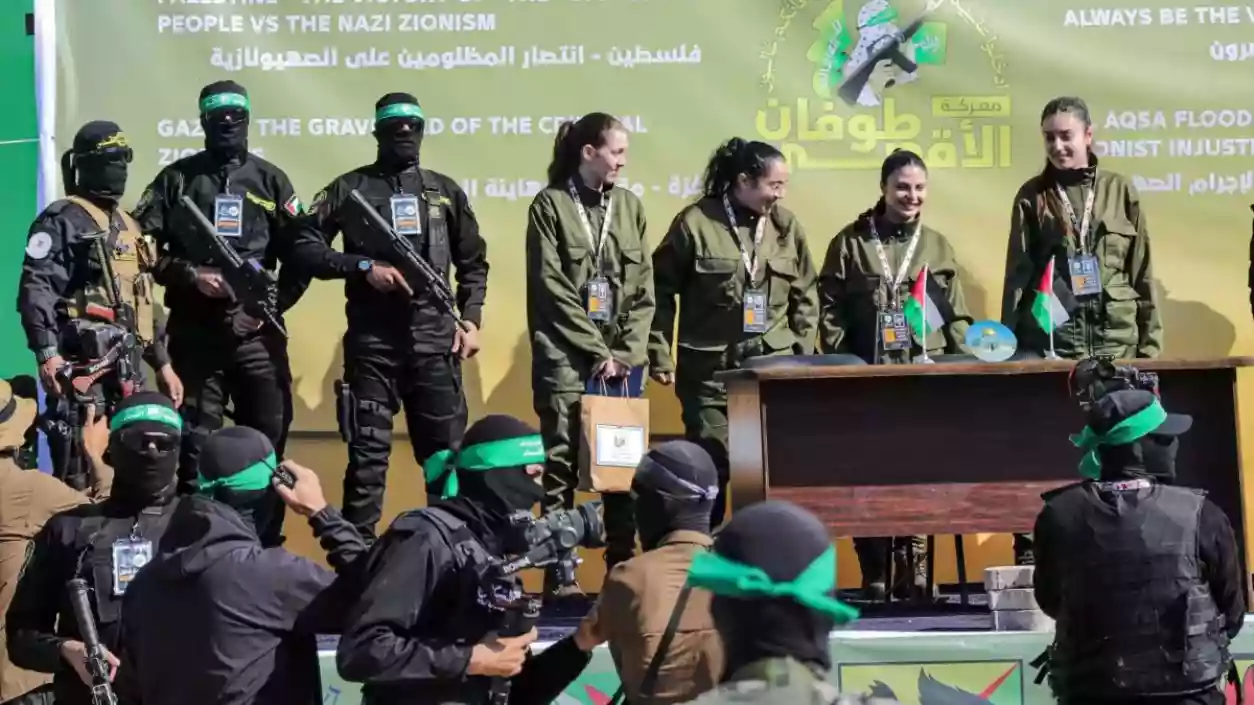Protests erupt outside Kasba Police station as 3 arrested in alleged Kolkata college gang rape
.gif)
.gif)

On January 25, Hamas released four Israeli female soldiers—Karina Ariev, Daniela Gilboa, Naama Levy, and Liri Albag—as part of a ceasefire agreement following 15 months of intense conflict between Israel and Hamas. The four soldiers, who had been captured on October 7, 2023, during Hamas' attack on Israel, were handed over to the International Committee of the Red Cross (ICRC) in Gaza City. They were later transferred to Israeli military forces for further medical assessments and processing. The soldiers had been taken from the Nahal Oz military base near the Gaza border during the initial attack that escalated the war.
This release is the second exchange under the ceasefire, which was brokered by Qatar, Egypt, and the United States. As part of this ongoing arrangement, Hamas freed the four Israeli soldiers in exchange for 200 Palestinian prisoners, including individuals convicted of deadly attacks against Israelis. While it is not clear where these prisoners will be sent, they are likely to be released into Gaza or sent abroad. The agreement also includes provisions for the gradual release of further hostages and prisoners from both sides.
The first exchange occurred on January 19, 2025, when Hamas released three Israeli civilians in exchange for 90 Palestinian prisoners. Most of the Palestinian prisoners released in that swap were women and children. Following this, a phased process has been outlined, in which a total of 33 Israeli hostages are set to be released, including children, elderly individuals, and those who are sick or injured. In return, hundreds of Palestinian prisoners, including those with more severe convictions, will be freed. The deal stipulates that the prisoners will be released in phases, with the first being the exchange of women and children, followed by further negotiations on military-age prisoners.
The ceasefire also includes provisions for the withdrawal of Israeli military forces from parts of Gaza. Since the fighting began in October 2023, Gaza has sustained significant destruction, with large areas of the region left in ruins due to Israeli airstrikes and bombardments. Humanitarian aid, which had been severely restricted, is now flowing into Gaza, providing much-needed relief to civilians who had been cut off from basic supplies during the conflict.
As part of the broader ceasefire agreement, the reconstruction of Gaza is also a key focus. Thousands of Palestinians have been displaced, and many have returned to find their homes completely destroyed. The international community, including the United Nations, is involved in facilitating this aid and rebuilding process. The United States, Qatar, and Egypt have continued to push for the implementation of the ceasefire deal, aiming to ensure that the violence does not resume.
Looking ahead, the next phases of the ceasefire are expected to include the return of more hostages and prisoners, as well as further discussions on the complete withdrawal of Israeli forces from Gaza. The deal also calls for the return of the bodies of those who have died in captivity, both Israeli and Palestinian, and a comprehensive assessment of the damages in Gaza. The international community remains cautious about the sustainability of the ceasefire, with many emphasizing the need for a long-term resolution to the conflict. Over 47,000 Palestinians have been killed in Gaza since the conflict began, and more than 1,200 Israelis lost their lives in the October 7 Hamas attack.